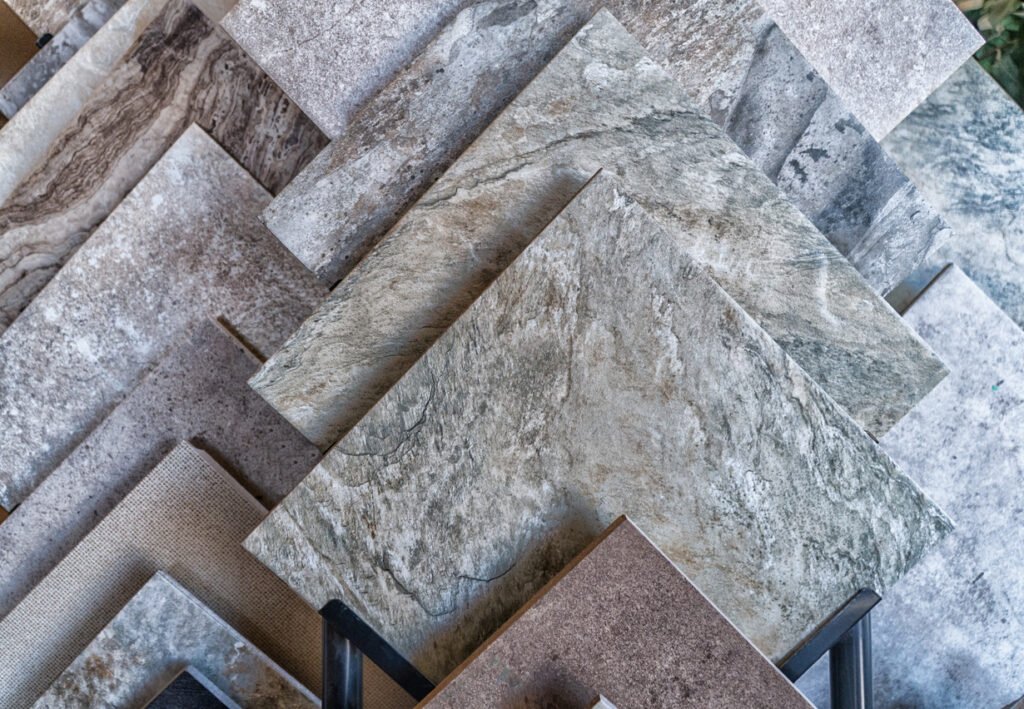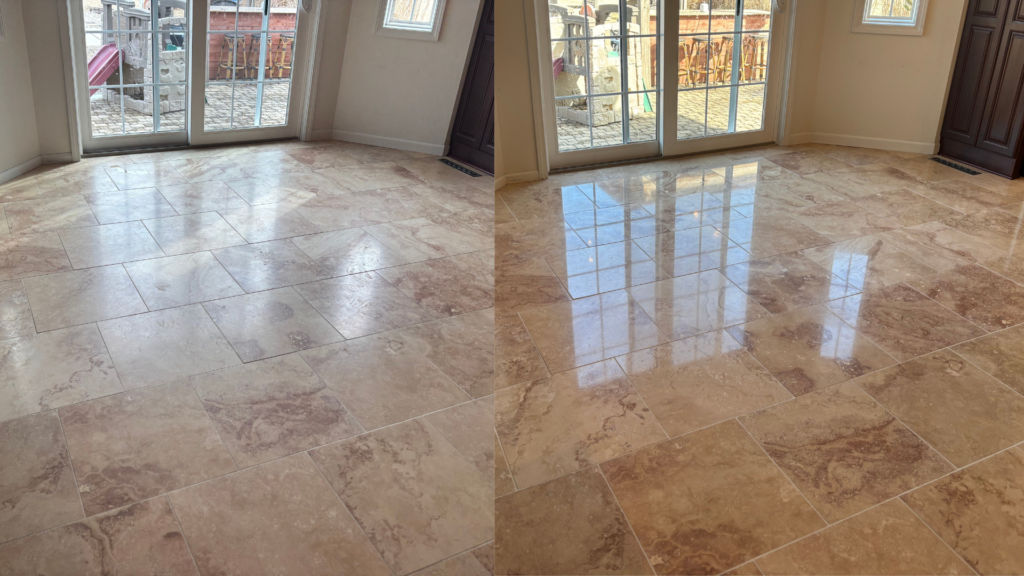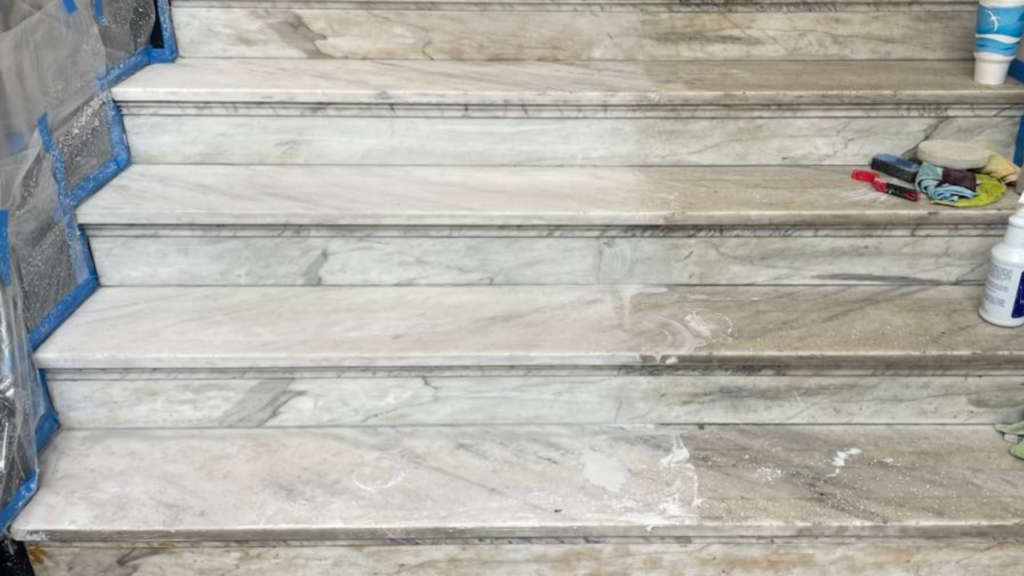The Irony of Micro-Scratches in Marble: How Damage Becomes the Cure

Marble has long symbolized elegance, timeless beauty, and polished perfection. But if you’ve ever noticed dull traffic paths winding across your once-glossy marble floors, you’re not imagining things. That worn appearance is the result of something very small, but very persistent: micro-scratches.
What Causes Micro-Scratches?
Marble is a relatively soft, calcium-based stone. While its shine and smoothness are alluring, that surface is vulnerable to fine abrasion. Tiny scratches accumulate over time from everyday living:
- Grit and sand tracked in from outside
- A pebble stuck in the tread of a shoe
- The claws of a large dog
- The rough underside of a jute-backed area rug
- Cleaning tools like stiff brushes or scrubbing pads
- Even dragging a bucket or furniture across the floor
Each little abrasion by itself is nearly invisible. But together, they scatter light, causing that once-mirrored surface to appear cloudy or dull—especially in high-traffic areas.

Where the Irony Begins
Here’s the surprising part: the solution to micro-scratches is more scratching—done intentionally, precisely, and in a controlled way.
Professional marble restoration involves re-surfacing the stone through a methodical process. Think of it like refinishing hardwood. Restoration starts by introducing new scratches that are slightly deeper than the existing ones. Then, using a sequence of diamond pads or abrasive powders, each pass progressively refines the surface until the scratches are so fine they no longer scatter light.
This process includes:
- Honing: Using diamond or powder abrasives to level the surface and remove visible scratches
- Final Polish: Often involves tin oxide and a mild specialized acid compound—yes, acid on marble—to produce the crystal-clear, mirror-like finish

Isn’t Acid Harmful to Marble?
It is. And it isn’t.
In daily cleaning, acids like vinegar or lemon juice are a big no-no for marble. They cause etching, which eats into the stone and dulls its surface.
But during professional polishing, a specific acidic compound is used very carefully in combination with ultra-fine abrasives. When handled by trained technicians, this controlled use of acid helps create that deep, luminous finish without compromising the integrity of the stone.
Why Homeowners Shouldn’t Attempt It
While DIY kits are available, polishing marble correctly is an art form rooted in physics and chemistry. If you skip grits, apply uneven pressure, or use the wrong tool, you risk damaging the floor beyond easy repair. That’s why at Personal Touch Service Solutions, we always recommend leaving marble restoration to professionals.
What “Restored” Really Means
Perfect restoration doesn’t necessarily mean removing every single scratch. Some are invisible to the naked eye and have no impact on appearance. Instead, the goal is a crisp reflection, consistent polished surface throughout which is best seen with backlighting.
Restoration returning a surface to as near new condition as possible—understanding the nature of the stone, the patterns of use, and the products and tools available create consistent success every time.

The Bottom Line
Micro-scratches dull your marble. But by using the right tools, skills, and a bit of chemical alchemy, those same scratches become the path back to beauty.
If your marble floor has lost its luster, don’t worry. The very forces that wore it down can help bring it back.
Let Personal Touch Service Solutions help you reclaim the brilliance beneath the surface—one careful pass at a time.

Leave Comment